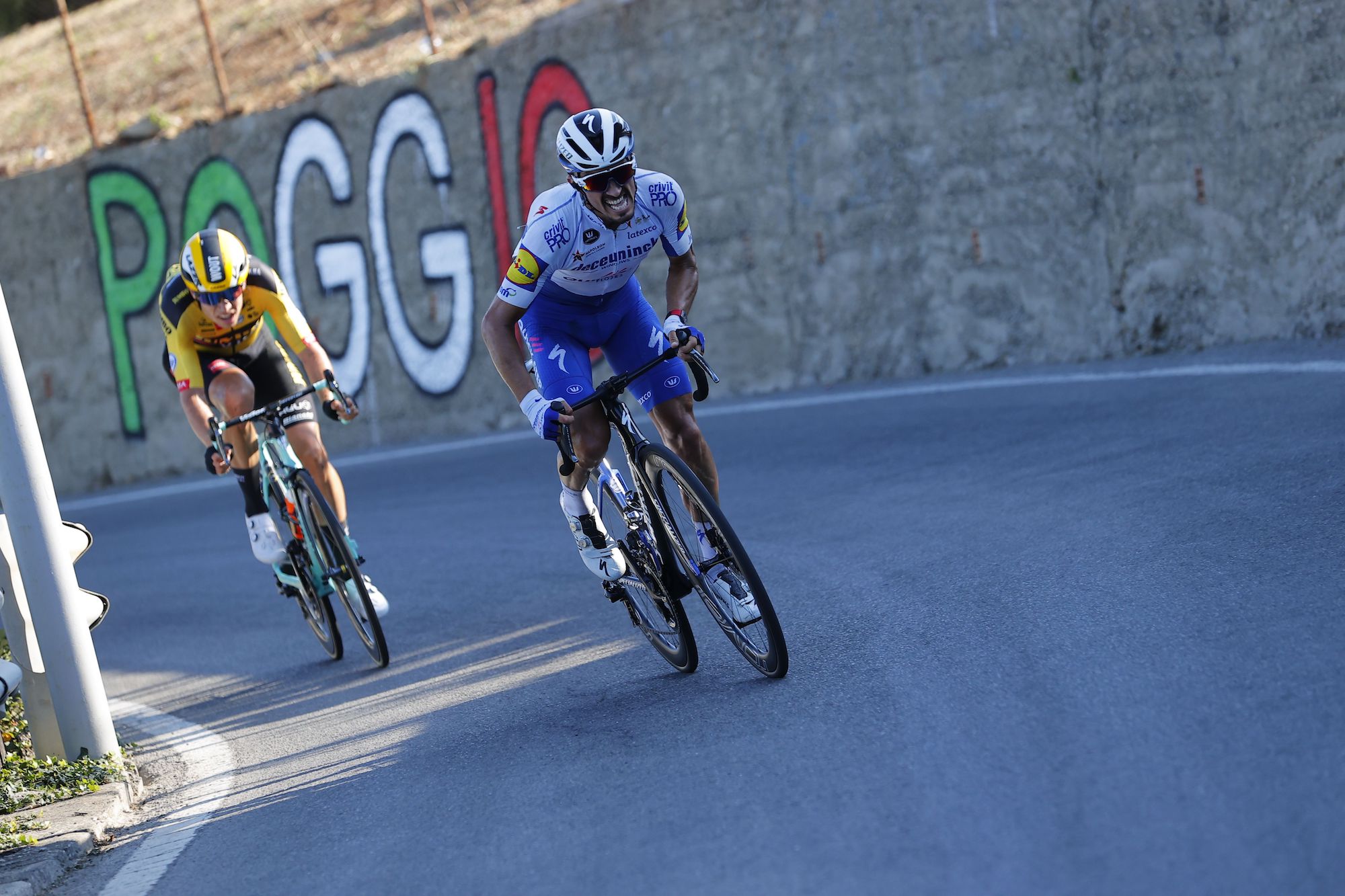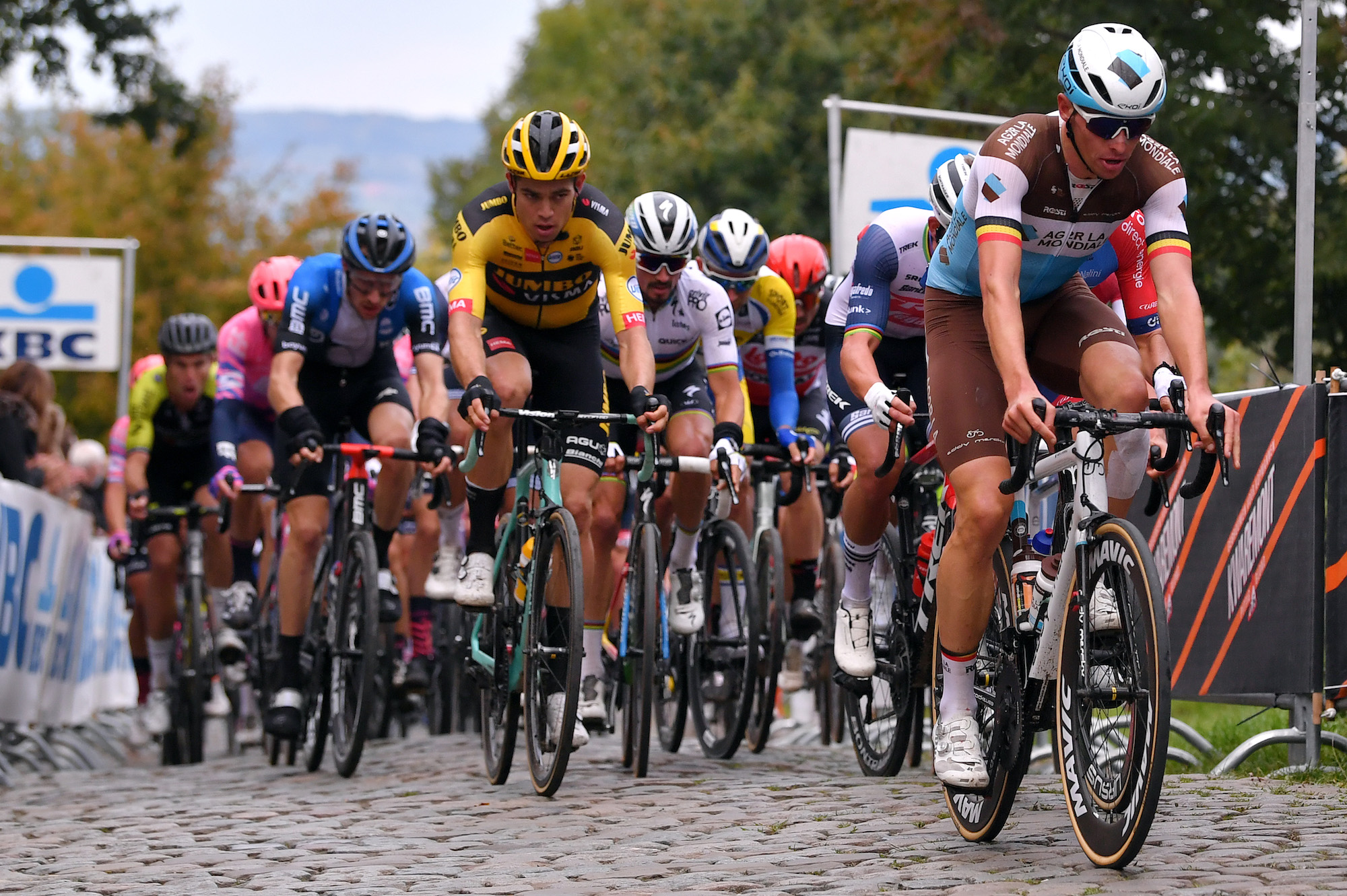The Monuments: Cycling’s five biggest one-day races
A guide to the five single-day pro bike races that make up cycling's Monuments


The five oldest, longest and most prestigious one-day races in professional cycling are grouped together under the heading 'Monuments'.
Milan-San Remo, the Tour of Flanders, Paris-Roubaix, Liège-Bastogne-Liège and Il Lombardia all boast a rich heritage and are the races that every rider wants to have in their list of victories. Only the Grand Tours - the Giro d'Italia, Tour de France and Vuelta a España - command as much kudos.
Each of the five races has its own special character that marks it out among the long list of professional races that take place every year. Such are their significance, that riders will tend to target them specifically, make one or more their main aim for the season - riders like Wout van Aert, Julian Alaphilippe, Mathieu van der Poel, Peter Sagan, Greg Van Avermaet, and Jakob Fuglsang.
All five are part of the UCI's top-tier WorldTour race calendar, and as such they command a full field of the biggest teams and leading riders.
For cycling fans, they are the most hotly-anticipated races of the year: always entertaining and action-packed. Here we present a handy guide to each of the five Monuments.
Milan-San Remo

Country: Italy
Date: Saturday, March 20 2021
Length: 299km
The latest race content, interviews, features, reviews and expert buying guides, direct to your inbox!
First edition: 1907
Also known as: La Primavera, The Sprinters' Classic
Rider with most wins: Eddy Merckx (seven wins)
As the first Monument of every season, Milan-San Remo always generates a huge amount of interest and excitement. The route is long, and does not feature the relentless hills and/or cobbled sections of other Monuments. This has often led to the race being contested by a bunch sprint.
However, the twin climbs of the Cipressa and Poggio in the finale of the race often serve to split the peloton, and drop those with tired legs. A daring attack by a rider on the Poggio within the last six kilometres of the race it what spectators want to see - even more so if it succeeds.
Tour of Flanders

Country: Belgium
Date: Sunday, April 4 2021
Length: 263.7km
First edition: 1913
Also known as: De Ronde, Ronde van Vlaanderen
Rider with most wins: Tom Boonen, Fabian Cancellara, Johan Museeuw, Achiel Buysse, Fiorenzo Magni, Eric Leman (all three wins)
Although it is still over a hundred years old, the Tour of Flanders is the youngest of the five Monuments. Its route is one of the toughest: a series of short, sharp hills and cobbled sections constantly whittle down the peloton and help to form attacks, breaks and splits.
Riders jostle for position before the base of each climb, and then use pure strength to make it out of the top in the lead – only to do it all again shortly afterwards. It's a fascinating race to watch unfurl and always provides great drama and a worthy winner.
Paris-Roubaix

Country: France
Date: Sunday, April 11 2021
Length: 257km
First edition: 1896
Also known as: Hell of the North, Queen of the Classics, La Pascale
Rider with most wins: Roger De Vlaeminck, Tom Boonen (four wins)
Paris-Roubaix is arguably the biggest bike race outside the Tour de France, and has an evergreen appeal. Why? It's a hard race and one that has earned it the title 'Hell of the North'. The sectors of rough, cobbled roads are what make the race and it requires nerves of steel and a tough physique to survive the incessant pounding from the surface.
No matter the weather, there's always a challenge: rain makes the cobbles slippery and muddy; dry weather makes them choking and dusty. The race finishes in the Roubaix velodrome, where a front group of riders is often forced to sprint for the victory as they loop the track. There's simply no race like it.
Liège-Bastogne-Liège

Country: Belgium
Date: Sunday, April 25 2021
Length: 259.5km
First edition: 1892
Also known as: La Doyenne
Rider with most wins: Eddy Merckx (five wins)
The climb-filled Liège-Bastogne-Liège takes on the leg-sapping ascents of the Ardennes, and is a race that is often contested by climbers and Grand Tour riders as much as Classics riders. It's also the oldest of the Monuments, having been first run in 1892.
The majority of the race's climbs are packed into the final 100km, providing a relentless barrage of climbing that barely allows any respite for tired riders. Despite its position as the final spring Classic, it can still be affected by bad weather to add to the riders' misery.
Il Lombardia

Country: Italy
Date: Saturday, October 09 2021
Length: 247km
First edition: 1892
Also known as: Giro di Lombardia, Tour of Lombardy, Race of the Falling Leaves
Rider with most wins: Fausto Coppi (five wins)
The only Monument to take place in the autumn rather than spring, Il Lombardia or the Tour of Lombardy is very different than its northern European cousins. The picturesque route takes riders around Lake Como in a testing war of attrition.
Like Liège-Bastogne-Liège, Il Lombardia has a reputation for being a climber's Classic, taking in longer ascents than the power climbs of the Tour of Flanders. It's often the final outing for Grand Tour riders seeking to take one final victory before the season ends.

Nigel Wynn worked as associate editor on CyclingWeekly.com, he worked almost single-handedly on the Cycling Weekly website in its early days. His passion for cycling, his writing and his creativity, as well as his hard work and dedication, were the original driving force behind the website’s success. Without him, CyclingWeekly.com would certainly not exist on the size and scale that it enjoys today. Nigel sadly passed away, following a brave battle with a cancer-related illness, in 2018. He was a highly valued colleague, and more importantly, an exceptional person to work with - his presence is sorely missed.